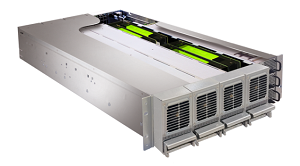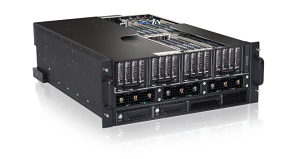In this week’s Sponsored Post, Katie (Garrison) Rivera, of One Stop Systems explains how GPUs and Flash solutions are used in radar simulation and anti-submarine warfare applications.

Katie (Garrison) Rivera, Marketing Communications, One Stop Solutions
High-performance compute and flash solutions are not just used in the lab anymore. Government agencies, particularly the military, are using GPUs and flash for complex applications such as radar simulation, anti-submarine warfare and other areas of defense that require intensive parallel processing and large amounts of data recording.
Using NVIDIA Tesla K80 GPUs can enable speedups of over a hundred times for radar simulation applications. Modeling clutter is one aspect of radar simulation that requires more computational power. In radar signals there is a certain amount of noise, or echoes from ground reflections that can distract radar operators from the signal they’re interested in detecting. Clutter can be from natural objects such as precipitation, sand storms, and animals or from man-made objects such as buildings or intentional radar countermeasures. The process of neutralizing clutter during simulations can be accomplished by increasing precision, which requires more computation. Using CPUs for high precision simulations is much slower than GPUs. Running radar simulations more quickly allows radar operators to model more simulations and train faster. In simulations, speed may not be that important but in real military applications, every second counts.
[clickToTweet tweet=”Using CPUs for high precision simulations is much slower than GPUs. ” quote=”Using CPUs for high precision simulations is much slower than GPUs. “]

One Stop Systems’ High Density Compute Accelerator (HDCA)
GPUs are well suited for radar simulation so it makes sense that government agencies and the military are running GPU systems such as One Stop Systems’ High Density Compute Accelerator (HDCA). The HDCA supports up to sixteen NVIDIA Tesla K80 GPUs, each with a 128Gb/s bandwidth and can be attached to up to four computers with each GPU operating at full capacity. One Stop Systems also offers a different power density option for applications that require mobile installations. The ExpressBox 3600 (EB3600) supports up to nine NVIDIA Tesla GPUs in a more mobile, lightweight chassis that requires less power than the HDCA.
The military is also using high density solid state flash systems to collect and store vast amounts of data at blazing speeds.
In addition to GPU accelerator solutions, the military is also using high density solid state flash systems to collect and store vast amounts of data at blazing speeds. The military utilizes aircraft that conduct anti-submarine warfare, an application that is heavily dependent on sensor technology. The various sensors aboard these aircraft all collect large amounts of data at high speeds that need to be stored. Originally, the storage systems on these crafts used outdated rotating mechanical disk storage technology that weighed hundreds of pounds and were not reliable due to vibration and human handling. On the ground, the weight of systems is less important but on an aircraft, every pound can decrease fuel efficiency and time on station.
During an upgrade, One Stop Systems was awarded contracts to design and build an incredibly dense, lightweight, high-speed, high-capacity solid state solution: the 4U Rugged Flash Storage Network Appliance (FSAn-4R). The FSAn-4R uses the highest performance PCIe NVMe flash with PCIe 3.0 x8 lanes for double the bandwidth of traditional 2.5” form factor NVMe drives. In addition, it includes features such as bulk hot swap of many drives at one time, Follow-Me™ RAID configuration data and all front loading storage packs. Each data pack contains eight HGST Ultrastar SN260 PCIe SSDs for up to 50TB* of removable flash storage that weighs six pounds. At a total of 76 pounds, the entire system is a major upgrade for aircraft that is size, weight and power (SWaP) sensitive.

One Stop Systems’ 4U Rugged Flash Storage Network Appliance (FSAn-4R)
As technology continues to improve, GPUs will be able to compute more in less time, and flash will be able to store larger amounts of data in a smaller footprint.
As technology continues to improve, GPUs will be able to compute more in less time, and flash will be able to store larger amounts of data in a smaller footprint. Both GPUs and flash are well suited for these applications and it’s comforting to know those responsible for our protection are using the best technologies possible for defense and security.
*Based on today’s industry leading flash card capacity.
This guest article was submitted by Katie (Garrison) Rivera, marketing communications at One Stop Systems.



